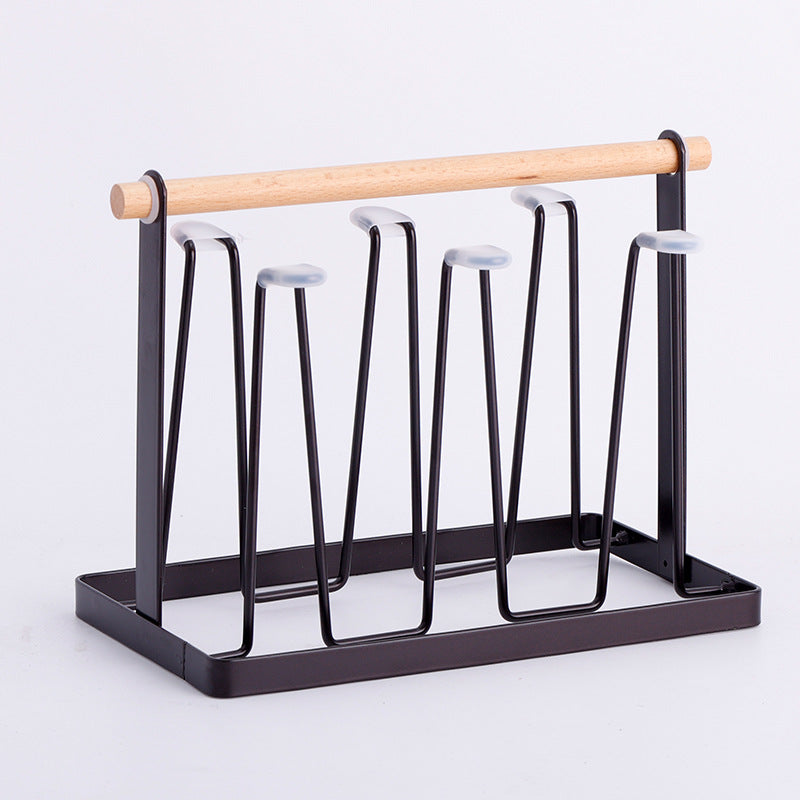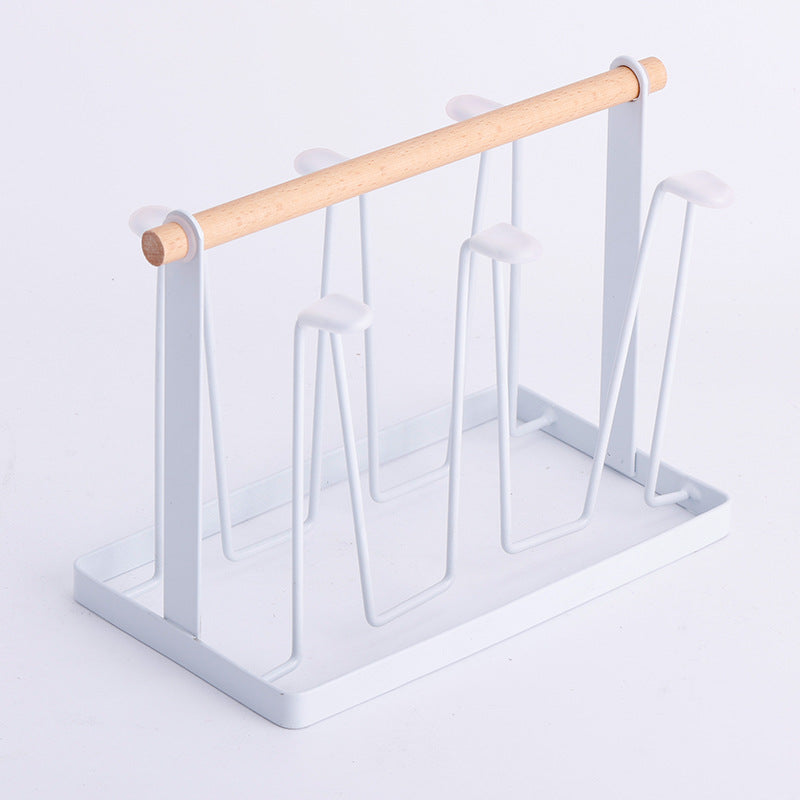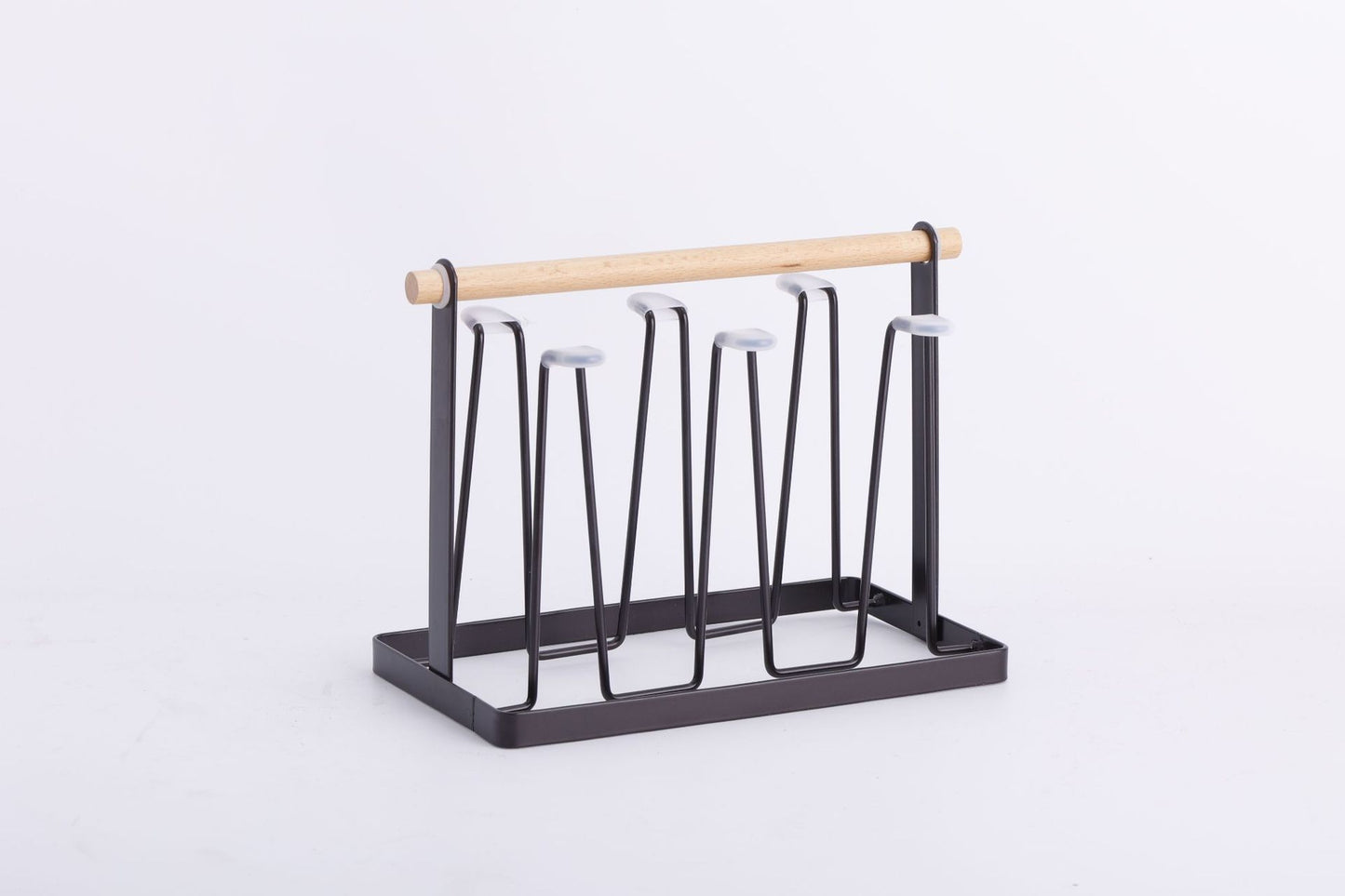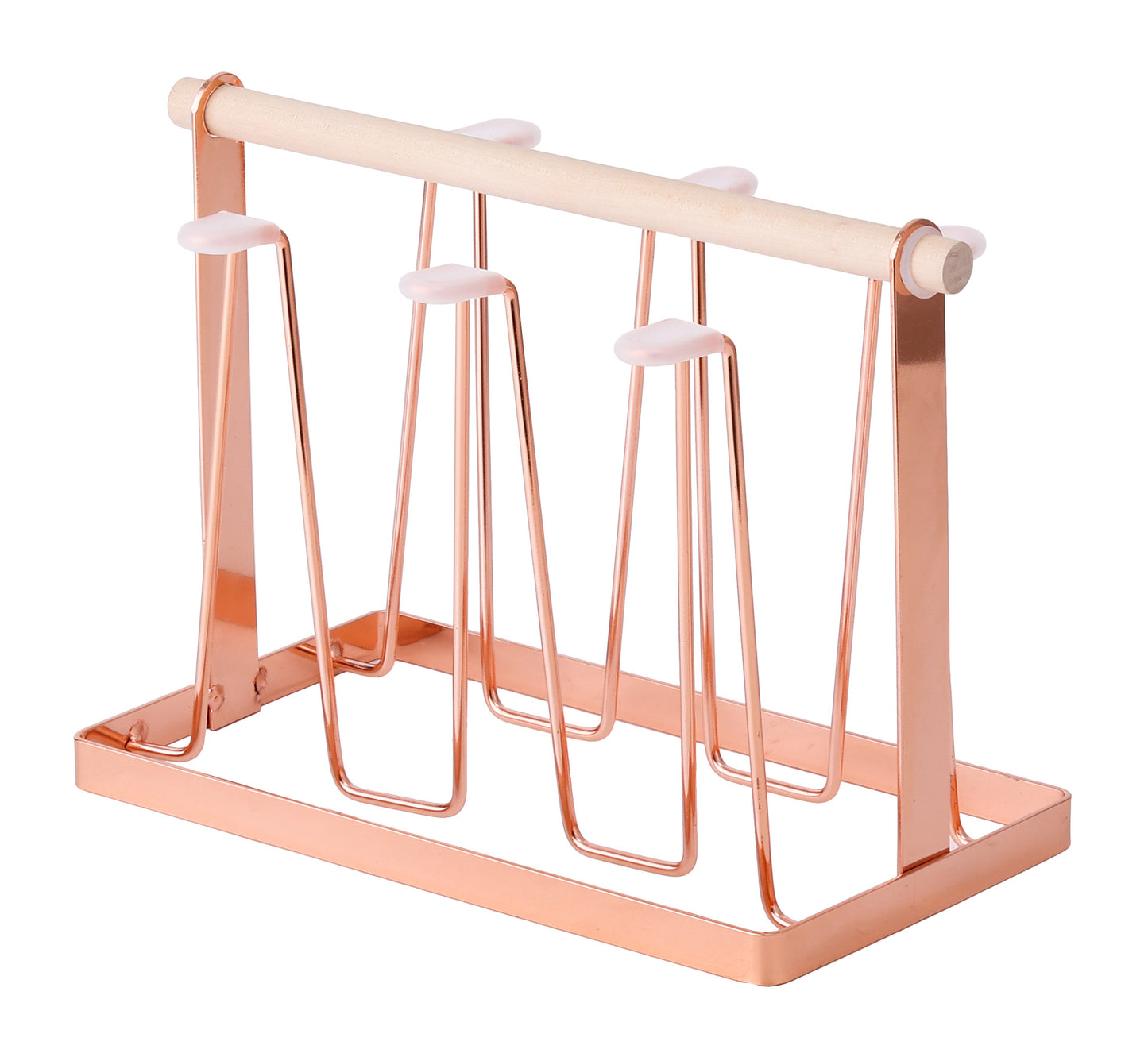차 문화
차 문화
원래 차는 음료가 아닌 약으로 사용되었습니다. 고대 중국의 전설적인 통치자 신농이 많은 식물을 맛보고 여러 번 중독되었다고 전해집니다. 그가 중독 효과를 없애는 데 도움을 준 것은 차였습니다. 이후 고대 중국인들은 차에 대해 점점 더 많이 알게 되었고, 약으로 여겨지기보다는 음료가 되었습니다.
원래 차는 약으로만 사용되었고 그 약리 효과로 잘 알려져 있었습니다. 이 외에도 때때로 차는 요리에 사용되었습니다.
차 음용이 공동체의 일부가 되기 전, 차 음용은 주로 불교 승려들에 의해 행해지는 일반적인 관행이었습니다. 더 유명한 차들은 수도원 주변의 산악 지역에서 승려들에 의해 재배됩니다.
이 습관적인 차 음용의 출발점은 당나라 작가 루 유의 "차의 고전" 출판과 함께 시작되었습니다. 이 책은 차 음용을 불교 사상과 연결지었고, 이는 당시의 매우 영적인 중국 문화에 큰 영향을 미쳤습니다.
결국 차는 중국의 일상과 여러 행사에 일부분이 되었고, 따라서 진정으로 중국 문화의 일부로 자리 잡았습니다.
차 문화의 예절
1.차를 만들기 전에 뜨거운 물로 다기 세트를 청소해야 합니다.
2.차를 준비할 때, 우리는 손님에게 어떤 종류의 차를 선호하는지와 손님의 취향, 강한 차인지 약한 차인지를 물어봐야 합니다.
3.차 잎을 직접 손으로 잡지 마세요. 차 스푼을 사용하거나 직접 주전자에 흔들어 넣으세요.
4. 주전자 뚜껑을 열고, 주전자 가장자리를 따라 물 링 냄비의 뚜껑 개구부를 세척하여 주전자의 핵심을 직접 세척하지 않도록 합니다.
5. 적절한 컵에 차를 붓습니다. 국물은 거품을 피하기 위해 낮아야 합니다. 차를 뜨겁게 유지하기 위해 빠르게 해야 합니다.
6. 차를 너무 가득 채우지 마세요. 차를 70% 정도 채우는 것이 좋습니다. 너무 가득 부으면 손님이 컵을 들기 불편하고, 손이 쉽게 데일 수 있습니다.
7. 손님에게 차를 줄 때는 컵의 위치에 주의해야 합니다.
오른손의 엄지와 검지가 찻잔의 가장자리를 잡고, 중지는 차의 바닥을 보호하며, 약지와 새끼손가는 조여져 있어야 하고, 다른 사람을 가리킬 수 없어야 합니다. 존경을 나타내기 위해서입니다.
8. 손님에게 차 물을 추가하는 것을 잊지 마세요. 손님의 찻잔이 멀어지지 않도록 하세요. 그리고 차를 추가할 때는 손님이 먼저입니다.
우리의 차 가공 생산 라인






완벽한 차를 찾아보세요
완벽한 차를 찾아보세요
Confused about choosing tea? Let our guide help you decide!
I. Black Tea (Fully Fermented) Qimen Black Tea
Benefits: Warms the stomach, improves circulation, boosts energy.
Ideal for: Cold-sensitive individuals, sluggish digestion.
Precautions: Avoid excessive intake if prone to insomnia.
Season: Autumn and winter.
Dianhong Black Tea (Yunnan Black Tea)
Benefits: Rich in antioxidants, strengthens immunity, reduces stress.
Ideal for: Mental alertness, fatigue recovery.
Precautions: Avoid on an empty stomach; may cause palpitations.
Season: Winter.
Lapsang Souchong (Smoked Black Tea)
Benefits: Combats cold, enhances metabolism, antibacterial.
Ideal for: Office workers, cold climate dwellers.
Precautions: Avoid during pregnancy or acid reflux.
Season: Winter.
II. Green Tea (Unfermented) Dragon Well Tea (Longjing)
Benefits: Detoxifies, reduces inflammation, protects against radiation.
Ideal for: Desk workers, summer hydration.
Precautions: Avoid if cold-sensitive or menstruating.
Season: Spring and early summer.
Green Snail Spring Tea (Biluochun)
Benefits: Sharpens focus, aids weight management, supports oral health.
Ideal for: High cholesterol or hypertension patients.
Precautions: Avoid late-day consumption.
Season: Spring.
Monkey King Tea (Taiping Houkui)
Benefits: Soothes throat irritation, lowers cholesterol.
Ideal for: Respiratory or metabolic issues.
Precautions: Drink after meals.
Season: Spring and summer.
Xinyang Hairy Tip Tea (Xinyang Maojian)
Benefits: Antioxidant-rich, improves digestion, boosts immunity.
Ideal for: General wellness, fatigue recovery.
Precautions: Moderate intake for caffeine sensitivity.
Season: Spring.
Yellow Mountain Fur Peak Tea (Huangshan Maofeng)
Benefits: Calms nerves, enhances mental clarity.
Ideal for: Stress relief, mental fatigue.
Precautions: Avoid strong brews on an empty stomach.
Season: Spring.
Liuan Melon Seed Tea (Liu’an Guapian)
Benefits: Clears heat, aids digestion, reduces bloating.
Ideal for: Summer heat relief, digestive discomfort.
Precautions: Avoid for cold constitutions.
Season: Summer.
Anji White Tea
Benefits: High amino acids, calms nerves, improves memory.
Ideal for: Mental fatigue, students.
Precautions: Moderate intake for cold-sensitive individuals.
Season: Spring.
III. Oolong Tea (Semi-Fermented) Iron Goddess Tea (Tieguanyin)
Benefits: Aids digestion, regulates blood sugar, neutralizes odors.
Ideal for: Weight management, diabetic diets.
Precautions: Avoid on an empty stomach.
Season: Autumn.
Big Red Robe Tea (Da Hong Pao)
Benefits: Strengthens digestion, reduces uric acid, anti-aging.
Ideal for: Middle-aged/elderly adults, gout-prone individuals.
Precautions: Age tea for 6+ months before brewing.
Season: Autumn and winter.
Phoenix Dancong Tea
Benefits: Enhances mental clarity, aids fatty food digestion.
Ideal for: Meat-heavy diets, stress relief.
Precautions: Limit afternoon intake.
Season: Spring and autumn.
IV. Dark Tea (Post-Fermented) Pu-erh Tea (Ripe)
Benefits: Lowers cholesterol, supports liver health, regulates gut flora.
Ideal for: High blood pressure/lipids/sugar.
Precautions: Avoid with iron deficiency.
Season: Year-round, ideal in winter.
Liubao Tea
Benefits: Reduces dampness, alleviates diarrhea, antioxidant-rich.
Ideal for: Humid climates, digestive issues.
Precautions: Avoid during pregnancy or anemia.
Season: Summer and winter.
V. White Tea (Minimally Processed) Silver Needle White Tea
Benefits: Boosts immunity, antibacterial, reduces inflammation.
Ideal for: Heat-sensitive individuals, immune support.
Precautions: Not ideal for cold constitutions.
Season: Spring and summer.
VI. Yellow Tea (Light Fermentation) Junshan Silver Needle Tea
Benefits: Gentle on digestion, rich in antioxidants.
Ideal for: Sensitive stomachs, general wellness.
Precautions: Avoid pairing with medications.
Season: Spring and autumn.
VII. Flower/Herbal Infusions Jasmine Tea
Benefits: Relieves anxiety, improves sleep, antibacterial.
Ideal for: Stress relief, summer refreshment.
Precautions: Limit afternoon intake for sleep-sensitive individuals.
Season: Spring and summer.
Chrysanthemum Tea
Benefits: Cools the body, lowers blood pressure, relieves eye strain.
Ideal for: Screen users, hypertension management.
Precautions: Avoid if prone to cold sensitivity or diarrhea.
Season: Summer.
Rose Tea
Benefits: Balances hormones, improves mood, enhances skin health.
Ideal for: Women’s wellness, emotional balance.
Precautions: Avoid during heavy menstrual flow or pregnancy.
Season: Spring and autumn.
General Guidelines Pregnancy: Opt for caffeine-free herbal teas; limit black/oolong teas.
Anemia: Avoid tea during meals (tannins block iron absorption).
Insomnia: Choose aged white tea; avoid caffeine after noon.
Empty Stomach: Avoid strong green/dark teas before eating.
Seasonal Recommendations Spring: Green teas (Dragon Well, Biluochun), jasmine tea.
Summer: White tea, chrysanthemum tea.
Autumn: Oolong, chrysanthemum tea.
Winter: Black tea, dark tea.
차 우림 가이드
차 우림 가이드
양조 가이드는 기초로서의 역할을 합니다. 기본을 이해한 후에는 자유롭게 실험하고 자신의 취향에 맞게 양조를 조정하세요. 건배!
|
차 종류 |
물 온도 |
차의 그램 |
첫 번째 우려내기 |
+ 우려내기 |
#의 |
찻주전자 |
|
홍차 |
95°C/203°F |
3g |
20에서 30 |
+30 |
3에서 4 |
도자기 또는 테라코타 |
|
꽃봉오리 차 |
90°C/194°F |
2g에서 3g |
60 |
+60 |
2 |
유리 또는 도자기 |
|
녹차 |
80°C/176°F |
3g |
20 |
+20에서 30 |
3에서 4 |
유리 또는 도자기 |
|
허브차 |
85°C/185°F |
3g |
60 |
+90 |
2 |
유리 또는 도자기 |
|
아이언 부처 차 |
95°C/203°F |
6g |
15에서 20 |
+20 |
5에서 7 |
도자기 또는 테라코타 |
|
재스민 차 |
85°C/185°F |
4g |
25 |
+35 |
3에서 4 |
유리 또는 도자기 |
|
쿠딩 원 리프 차 |
95°C/203°F |
1개 |
60 |
+90 |
3에서 4 |
도자기 |
|
룩 온 차 |
95°C/203°F |
7g |
30에서 40 |
+30 |
5에서 6 |
테라코타 또는 도자기 |
|
우롱차 |
95°C/203°F |
6g |
10에서 15 |
+20 |
6에서 7 |
테라코타 또는 도자기 |
|
푸얼 차 느슨한 |
100°C/212°F |
5-6g |
45 |
+60 |
3에서 4 |
테라코타 또는 도자기 |
|
푸얼 차 케이크 - 익힌 |
100°C/212°F |
5g |
20 |
+30 |
6에서 7 |
테라코타 또는 도자기 |
|
푸얼 차 케이크 - 생 |
95°C/203°F |
5g |
10에서 15 |
+15에서 20 |
6에서 7 |
테라코타 또는 도자기 |
|
화이트 티 |
80°C/176°F |
4g |
30 |
+40에서 45 |
5에서 6 |
유리 또는 도자기 |
|
노란 차 |
80°C/176°F |
4g |
20 |
+20에서 30 |
3에서 4 |
유리 또는 도자기 |
우림 단계
완벽한 중국 차를 만드는 팁. 각 카테고리 내의 차는 독특합니다. 개인의 취향에 맞추기 위한 가이드로 사용하세요.
-
항상 끓는 물로 차 주전자를 청소하고 씻는 것부터 시작하세요.
-
따뜻한 주전자에 넉넉한 양의 차 잎을 넣고 뜨거운 물로 헹굽니다. 이 과정은 차 잎의 초기 맛을 끌어냅니다.
-
정확한 온도에서 두 번째로 뜨거운 물을 추가하세요.
-
차 잎의 종류에 따라 사용되는 물의 양도 달라집니다.
-
적절한 우림 시간은 필수적입니다.
-
뜨거운 물로 차 컵을 데우세요.
-
한 번에 컵을 가득 채우지 마세요. 컵을 원형으로 배열하고 연속적인 원형 동작으로 차를 붓습니다.
-
다시 말해, 각 컵에 소량의 차를 몇 번에 걸쳐 부어 컵이 가득 차도록 하세요. 이렇게 하면 차의 맛이 완벽하게 균형을 이룹니다.
차의 효능과 기능
차의 효능과 기능
It has multiple functions such as clearing heat, relieving summer heat, removing fire, and reducing dryness.
The tea polyphenols and catechins in green tea can effectively resist oxidation, refresh the mind, and improve work efficiency.
Long-term drinking can help whiten the skin, improve anemia, prevent cancer, and reduce the toxic side effects of drugs.
Black tea:
The caffeine in black tea can stimulate the central nervous system and play a refreshing role.
It can also promote gastrointestinal motility, remove greasiness, enhance appetite, and has the effect of diuresis and swelling.
The high degree of fermentation reduces the irritation to the stomach and intestines, and is suitable for people of all ages to drink.
Oolong tea:
The caffeine in oolong tea can also refresh the mind and improve work efficiency.
It also has the effects of weight loss and beauty, and lowering cholesterol, and is deeply loved by beauty lovers.
Long-term drinking helps resist aging and improve skin allergy symptoms.
White tea:
The content of tea polyphenols in white tea is high, which can improve immunity and protect cardiovascular system.
It has the effects of preventing heatstroke, clearing away heat and detoxifying, and is especially suitable for drinking in summer.
Pu'er tea:
Pu'er tea has multiple functions such as clearing heat, relieving heat, detoxifying, and digesting food.
It can also remove fat, promote diuresis, relieve constipation, and eliminate phlegm, which has a positive effect on improving human body functions.
Flower tea:
Flower tea such as rose tea has the effects of regulating the stomach and intestines, detoxifying and beautifying.
It is suitable for people with insufficient qi and blood and endocrine disorders, and helps to improve physical fitness.
Other special teas:
Dragon Well tea can purify blood vessels and prevent stroke and heart disease.
Green Snail Spring tea has the effects of anti-aging, antibacterial, anti-cancer, lowering blood lipids, whitening and UV protection.
In addition, the ingredients such as caffeine and tea polyphenols in tea can promote gastric juice secretion, enhance gastrointestinal motility, and help digestion and absorption of food. At the same time, the aromatic compounds in tea can dissolve fat, help digest greasy food, and reduce the burden on the gastrointestinal tract. Tea also has antibacterial and anti-inflammatory effects, which can reduce the risk of infection.
Please note that although tea has many benefits, drinking tea on an empty stomach may irritate the gastric mucosa, increase gastric acid secretion, and put a burden on the stomach. Therefore, it is recommended to drink tea after a meal. At the same time, for special groups such as pregnant women, children, and the elderly, drinking tea also needs to be cautious. Learn more about the benefits of Chinese tea.
무형 문화유산
무형 문화유산
The traditional tea processing techniques and associated social practices in China have recently been inscribed on the UNESCO Representative List of Intangible Cultural Heritage for Humanity, marking it as the 43rd Chinese entry on this prestigious list. Encompassing the comprehensive knowledge, skills, and practices related to tea plantation management, leaf picking, manual processing, drinking, and sharing, "Chinese Tea" represents a rich tapestry of cultural heritage.

Origins and Diversity
China's traditional tea processing techniques are concentrated primarily in four distinct tea-growing regions: South and North of the Yangtze River, as well as Southwest and South China, located south of the Qinling-Huaihe line and east of the Qinghai-Tibet Plateau. Leveraging local conditions and customs, tea producers have honed their craft, utilizing core techniques such as enzyme inactivation, fermentation, and scenting to develop six primary categories of tea and various reprocessed teas, including flower-scented varieties. With over 2,000 tea varieties available, China boasts a vast array of tea-drinking customs.
Cultural Expressions
The intricate rituals surrounding tea drinking in China reflect the depth of its cultural significance. For instance, the "gongfu tea" of Chaozhou City showcases a comprehensive form of Chinese tea ceremony, featuring a meticulous 21-step brewing process. In contrast, the Bai ethnic minority practices the "three-course tea" ceremony, where the most esteemed elder in the family personally serves the tea. Meanwhile, in Yao communities, women entertain guests by preparing oil tea by the fireplace while singing folk songs, adding a unique cultural flair to the experience.
Spiritual and Moral Enrichment
Beyond its physical attributes, tea drinking in China has long been associated with spiritual and moral cultivation. Lu Yu, the Sage of Tea from the Tang Dynasty, elevated tea drinking to a spiritual pursuit in his seminal work, "The Classic of Tea." He believed that those who partake in tea were virtuous individuals seeking the supreme truth. Today, this tradition continues, with children participating in tea-brewing activities, learning etiquette and life philosophies amidst the soothing aroma of tea.
Economic and Social Impact
Tea culture has significantly contributed to the growth of China's tea industry. From the ancient Tea Horse Road and The Great Tea Road to modern-day initiatives, tea has been a cornerstone of economic exchange and development. In places like Baotian, a Dong and Miao ethnic township in Hunan Province, villagers have capitalized on their tea resources, exporting tea products overseas and fostering tea-based tourism, thereby promoting rural revitalization.
Preservation and Inheritance
Recognizing the importance of safeguarding this invaluable cultural heritage, China has implemented comprehensive protection plans. These include encouraging traditional apprenticeships, fostering specialized talent through educational institutions, and undertaking collaborative protection efforts to ensure the continued existence and transmission of these techniques and practices.
Global Significance
As the birthplace of tea, China's inclusion of its encyclopedic tea culture on the UNESCO list underscores its commitment to sharing this rich cultural heritage with the world. It not only deepens global understanding of China's fine traditional culture but also contributes to building a shared cultural foundation for a community with a common future for mankind.









추천 컬렉션
-
손잡이가 있는 스테인리스 스틸 하트 모양 차 우려내기기, 체인 하트 차 거름망, 우아한 차 필터 스푼
정상 가격 $7.25에서정상 가격단가 / 당$13.08판매 가격 $7.25에서세일 -
위스키 투명 유리컵, 가정용 유리컵, 인터넷 유명 종이접기 컵, 특수 형태의 물컵
정상 가격 $11.20에서정상 가격단가 / 당$26.50판매 가격 $11.20에서세일 -
중국 황도대 점토 차 세트 - 12피스 손으로 그린 동물 차 컵과 공푸 차, 빈티지 스타일 수집용 차기구, 홈 브루잉 및 아시아 문화 애호가를 위한
정상 가격 $18.61정상 가격단가 / 당$39.57판매 가격 $18.61세일 -
자주색 점토 주전자 - 홈 브루잉을 위한 인퓨저가 있는 수제 중국 공푸 차 세트 - 170ml, 250ml, 400ml
정상 가격 $19.80에서정상 가격단가 / 당$25.94판매 가격 $19.80에서세일

















